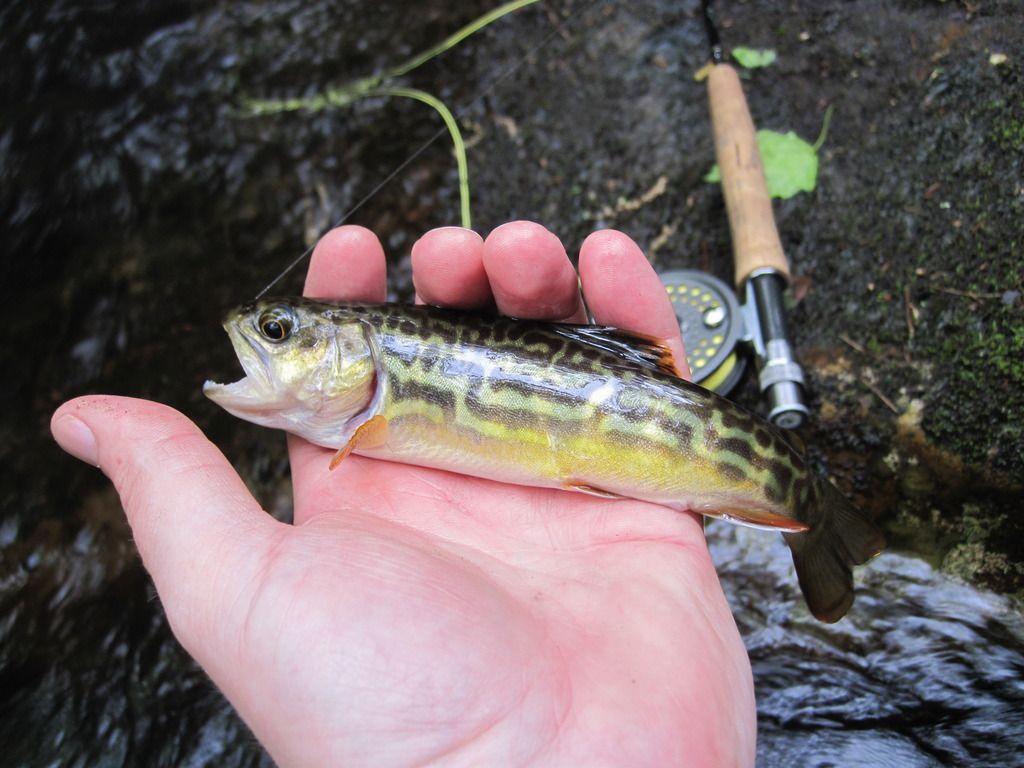If there is one present that is wild, wouldn't that seem to indicate at the very least more are likely?
No.
Yes, a single trout can lay hundreds or thousands of eggs. On average in the wild, maybe 40 or 50 actually hatch and 4 or 5 make it to the fingerling stage and 1 or 2 make it to adulthood (catchable size). That's normal. i.e. a brown mating with a brown or a brookie with a brookie. And it fits with the rules of populations, i.e. in any stable wild population, each member will, on average, replace itself once in it's lifetime, all other offspring will fail to reach breeding age. Otherwise the population would grow.
Now, in the case of tiger trout, this is a hybrid between not only 2 different species, but 2 entirely different genera. They have a different # of chromosomes. The % of the eggs that hatch is MUCH lower. So first, it's rare that a brown female gets fertilized by a brookie male in the wild. And even when that does happen, actually producing a single offspring that'll grow to catchable size is a longshot, despite there being a thousand or more eggs and thus "chances" for it to happen.
Things are obviously easier in a hatchery in laboratory conditions, both for single species as well as hybrids. For a single species, they can get up to 80-90% of the eggs to hatch by ensuring ALL eggs get fertilized, giving them optimal temps and substrate, etc. I don't know what % make it to adulthood but it likewise would be much better than in the wild.
In the case of tiger trout, they "heat shock" the eggs. It has to be fairly soon (within a half hour or so) after fertilization, with temperatures north of 80 F for a prescribed amount of time. It forces a mutation in the egg just short of killing it, producing the extra chromosomes, and thus allowing the % that hatch to be considerably better than it'd be in the wild, though still not equal to a non-hybrid.
To put it in perspective, most PA streams with wild brookies actually do have at least a token population of browns. The PFBC electroshocks streams routinely, and thus handle thousands upon thousands of wild trout, and each year they turn up only a small handful of wild tigers statewide.
The Nale brothers (FrankTroutAngler on this forum, but the name always stirs controversy) fish suitable streams commonly, catch obscene numbers of fish, and document them well. They've reported tiger catch rates in the range of 0.01% from appropriate streams. i.e. even if you are targeting the right places, you can expect about 1 wild tiger for every 10,000 wild trout you catch. And I'd say that's about right, as I've caught exactly 1 wild tiger myself and my total lifetime catch is probably somewhere between 5 and 20 thousand wild trout, the majority of which are in places that COULD have tigers.
In summary, if you wanna catch them, target stocked ones. If you wanna catch a wild one, well, targeting them is pretty useless, but keep fishing for wild trout and maybe someday you'll win the lottery.






